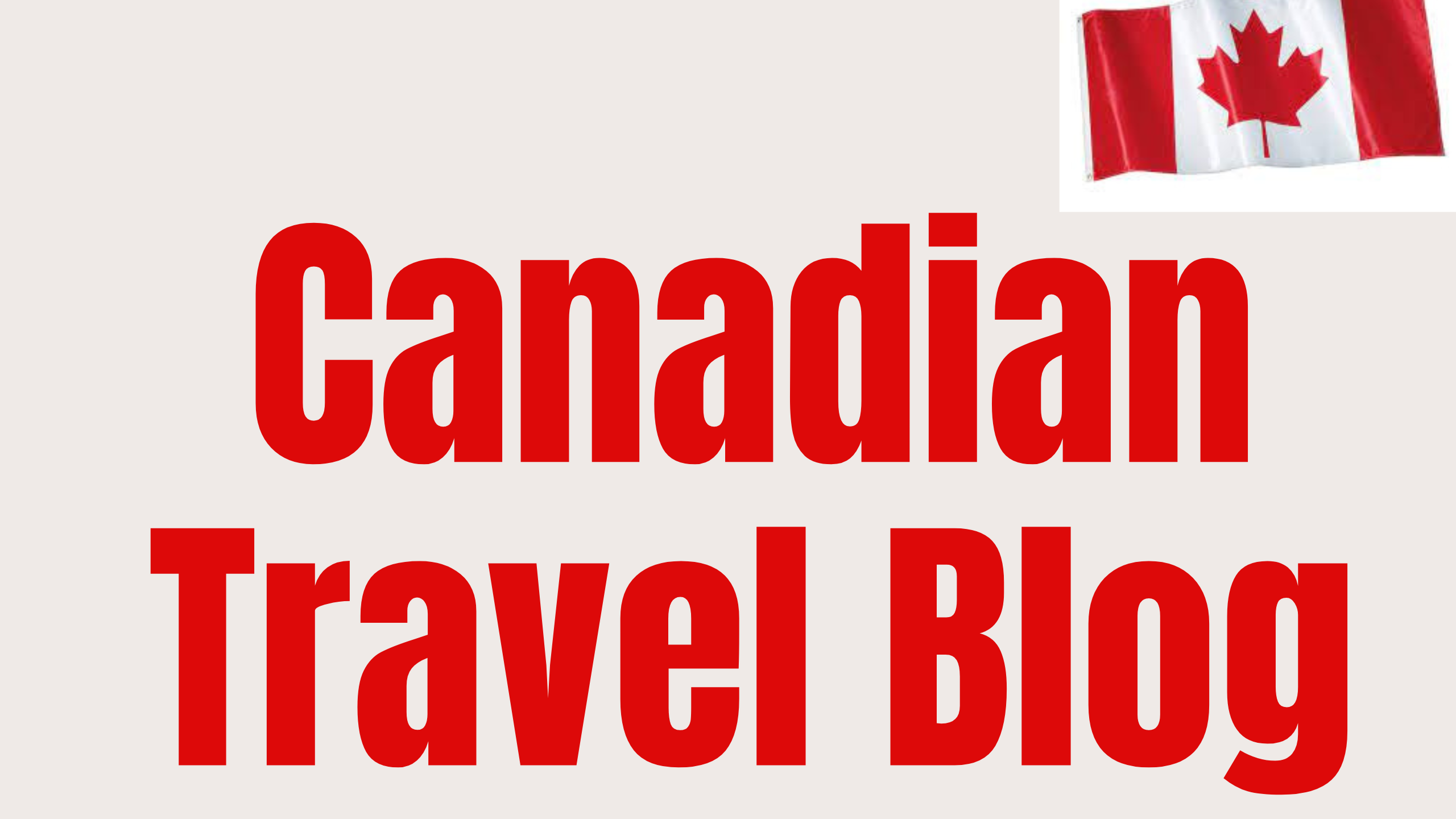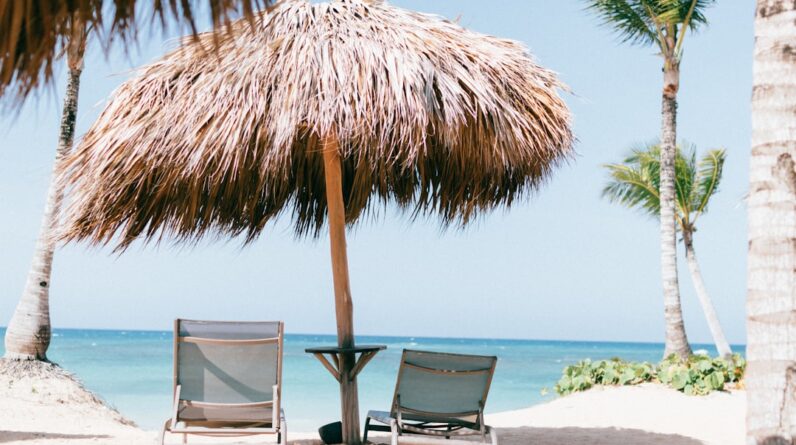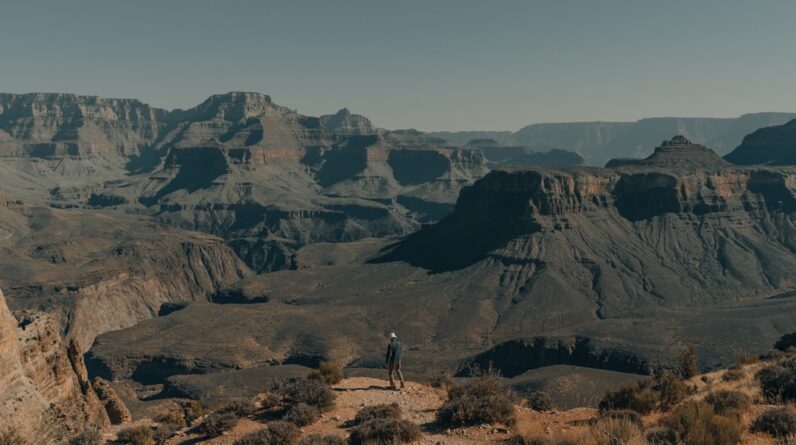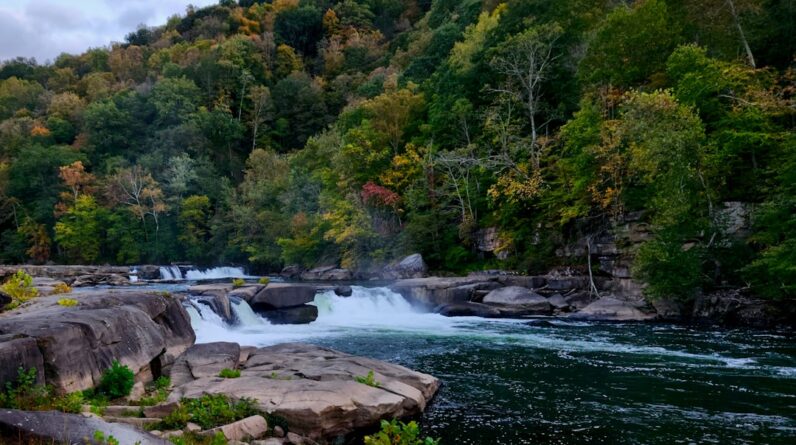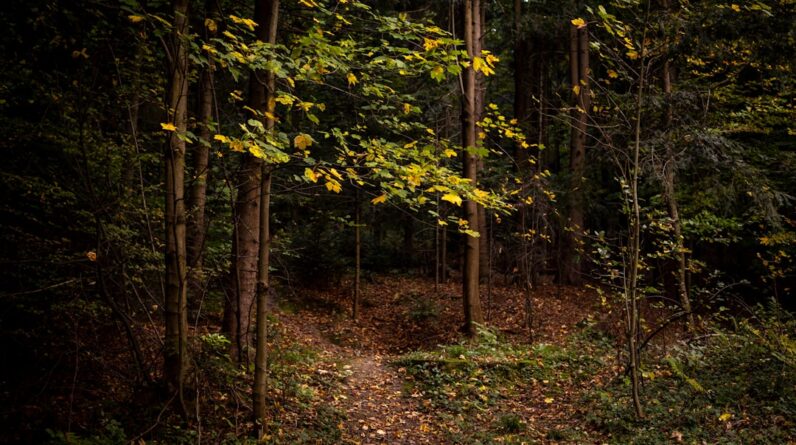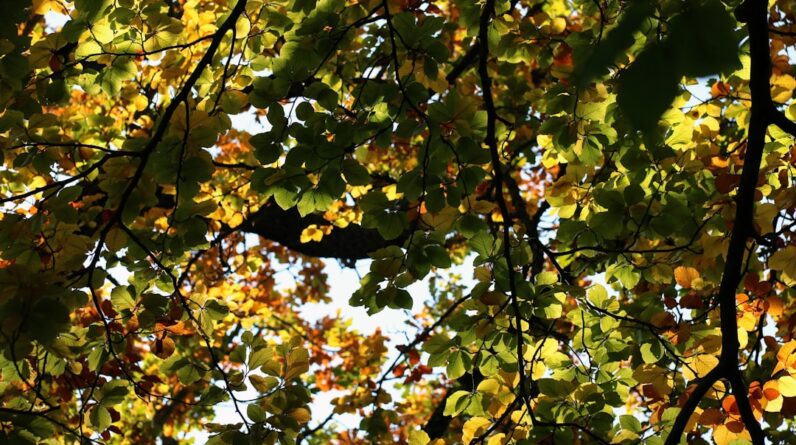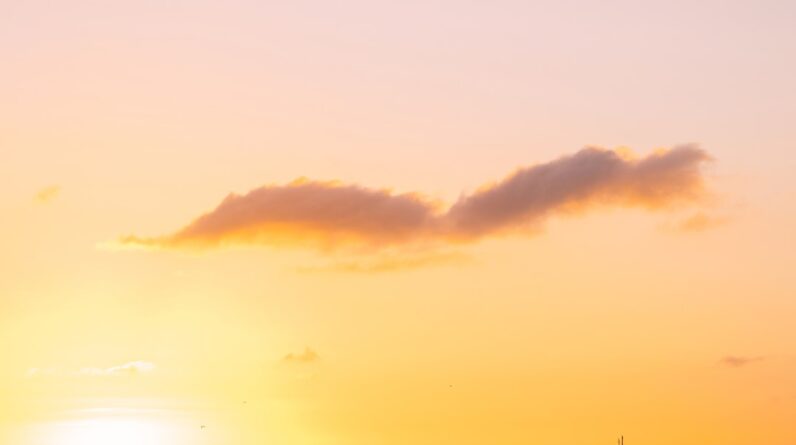Nestled in the heart of the Canadian Rockies, Banff National Park is a true gem of natural beauty. Established in 1885, it is not only Canada’s first national park but also one of the most visited parks in North America. Spanning over 6,600 square kilometers, Banff National Park offers breathtaking landscapes, pristine wilderness, and a wide range of outdoor activities for visitors to enjoy.
The history and significance of Banff National Park are deeply rooted in its Indigenous heritage and its role as a protected area. The park is located on the traditional territory of the Stoney Nakoda, Blackfoot, and Tsuut’ina Nations, who have lived in the area for thousands of years. In 1984, Banff National Park was designated a UNESCO World Heritage Site for its outstanding natural beauty and ecological significance.
Banff is a must-visit destination for nature lovers, adventure seekers, and anyone looking to immerse themselves in the splendor of the Canadian Rockies. With its towering mountains, turquoise lakes, and abundant wildlife, the park offers endless opportunities for exploration and discovery. Whether you’re hiking through alpine meadows, soaking in hot springs, or simply taking in the awe-inspiring views, Banff National Park will leave you with memories that will last a lifetime.
Key Takeaways
- Banff National Park is a stunning natural wonder located in the Canadian Rockies.
- The park offers a variety of attractions, including hiking trails, wildlife watching, and off-the-beaten-path adventures.
- Hikers can enjoy must-see views and tips for exploring the park’s trails.
- Wildlife enthusiasts can spot bears, elk, and other animals in their natural habitats.
- Visitors can choose from a range of camping and accommodation options, as well as local cuisine and restaurants.
Exploring the Wonders of Banff: A Guide to the Park’s Best Attractions
Banff National Park is home to a multitude of attractions that showcase its natural wonders. From iconic landmarks to hidden gems, there is something for everyone to enjoy. Some of the top attractions in Banff include Lake Louise, Moraine Lake, Johnston Canyon, and the Columbia Icefield.
Lake Louise is perhaps one of the most famous attractions in Banff National Park. Known for its stunning turquoise waters and surrounding snow-capped peaks, Lake Louise is a sight to behold. Visitors can take a leisurely stroll along the lakeshore, rent a canoe, or hike up to the Lake Agnes Tea House for panoramic views of the area.
Moraine Lake is another must-see destination in Banff. Located in the Valley of the Ten Peaks, Moraine Lake is known for its vibrant blue-green waters and dramatic mountain backdrop. The Rockpile Trail offers a short but rewarding hike that leads to a viewpoint overlooking the lake, providing the perfect photo opportunity.
Johnston Canyon is a popular spot for hiking and exploring. The canyon features a series of waterfalls and turquoise pools, accessible via a well-maintained trail. The Lower Falls and Upper Falls are the main highlights of the canyon, offering breathtaking views and the chance to witness the power of nature up close.
The Columbia Icefield is a massive expanse of ice that stretches across the border between Banff and Jasper National Parks. Visitors can take a guided tour onto the Athabasca Glacier, where they can walk on the ice and learn about the unique ecosystem that exists in this frozen landscape.
When planning your itinerary for Banff National Park, it’s important to consider the time you have available and your interests. The park offers a wide range of activities, including hiking, camping, wildlife watching, and scenic drives. It’s a good idea to prioritize your must-see attractions and plan your days accordingly.
To make the most of your visit, be sure to check the park’s website for any updates or closures. Some areas may be inaccessible due to weather conditions or wildlife activity. It’s also important to pack appropriately for your activities, including proper footwear, clothing layers, and any necessary equipment.
Hiking in Banff: Trails, Tips, and Must-See Views
Banff National Park is a hiker’s paradise, with over 1,600 kilometers of trails to explore. From easy walks to challenging multi-day treks, there is a trail for every level of hiker. Some of the best hiking trails in Banff include the Plain of Six Glaciers, Sentinel Pass, and the Sunshine Meadows.
The Plain of Six Glaciers trail is a moderate hike that offers stunning views of glaciers, mountains, and alpine meadows. The trail starts at Lake Louise and winds its way up to the Plain of Six Glaciers Tea House, where hikers can enjoy a well-deserved break and a cup of tea while taking in the breathtaking scenery.
Sentinel Pass is a more challenging hike that rewards hikers with panoramic views of the surrounding peaks and valleys. The trail starts at Moraine Lake and climbs steadily through a series of switchbacks before reaching the pass. From there, hikers can continue on to Larch Valley or return the way they came.
Sunshine Meadows is a high alpine meadow located near the Sunshine Village ski resort. The meadows are known for their vibrant wildflowers and stunning views of the surrounding mountains. There are several trails to choose from, ranging from easy walks to longer hikes, allowing visitors to tailor their experience to their fitness level.
When hiking in Banff National Park, it’s important to be prepared and hike responsibly. Make sure to bring plenty of water, snacks, and sunscreen, as well as appropriate clothing layers for changing weather conditions. It’s also a good idea to carry a map or guidebook and let someone know your hiking plans before you set out.
Safety is paramount when hiking in the park. Stay on designated trails, be aware of your surroundings, and watch for wildlife. It’s important to give animals plenty of space and never approach or feed them. Carry bear spray and know how to use it in case of an encounter with a bear or other wildlife.
Wildlife Watching in Banff: Spotting Bears, Elk, and More
| Animal | Best Time to Spot | Location | Precautions |
|---|---|---|---|
| Bears | Early morning or late evening | Many areas in Banff National Park | Stay at least 100 meters away and carry bear spray |
| Elk | Early morning or late evening | Open meadows and along the Bow Valley Parkway | Stay at least 30 meters away and do not approach |
| Bighorn Sheep | Year-round | Minnewanka Loop and along the Icefields Parkway | Stay at least 30 meters away and do not approach |
| Moose | Early morning or late evening | Marshy areas and along the Bow Valley Parkway | Stay at least 30 meters away and do not approach |
Banff National Park is home to a diverse array of wildlife, including bears, elk, moose, wolves, and more. Wildlife watching is a popular activity in the park, offering visitors the chance to observe these magnificent creatures in their natural habitat. Some of the best places to spot wildlife in Banff include the Bow Valley Parkway, Lake Minnewanka, and the Icefields Parkway.
The Bow Valley Parkway is a scenic road that runs parallel to the Trans-Canada Highway between Banff and Lake Louise. The parkway is known for its abundant wildlife, including elk, deer, and bears. Drive slowly and keep an eye out for animals along the roadside, but be sure to pull over safely and give them plenty of space.
Lake Minnewanka is a large glacial lake located just outside of Banff townsite. The lake is a popular spot for boating and fishing, but it’s also a great place to spot wildlife. Look for bighorn sheep along the shoreline or keep an eye out for bald eagles soaring overhead.
The Icefields Parkway is a scenic highway that stretches from Lake Louise to Jasper National Park. Along the way, you’ll pass through some of the most stunning landscapes in the Canadian Rockies and have the opportunity to spot wildlife such as mountain goats, bighorn sheep, and even grizzly bears. Be sure to pull over safely at designated viewpoints and use binoculars or a telephoto lens to observe animals from a distance.
When wildlife watching in Banff National Park, it’s important to remember that these are wild animals and should be treated with respect. Keep a safe distance at all times and never approach or feed them. Use binoculars or a telephoto lens to observe animals from a distance and avoid disturbing their natural behavior.
It’s also important to be aware of your surroundings and follow any safety guidelines provided by park officials. Bears, in particular, can be unpredictable, so it’s a good idea to carry bear spray and know how to use it in case of an encounter. Make noise while hiking to alert animals to your presence and avoid surprising them.
Camping and Accommodations in Banff: Where to Stay and What to Know
Banff National Park offers a range of camping options for visitors who want to immerse themselves in the park’s natural beauty. From front-country campgrounds with basic amenities to backcountry campsites accessible only by hiking or canoeing, there is a camping experience for every level of adventurer.
Front-country camping is the most accessible option for visitors who want to stay within the park boundaries. There are several campgrounds to choose from, including Tunnel Mountain, Two Jack Main, and Lake Louise. These campgrounds offer amenities such as picnic tables, fire pits, and washrooms, making them a convenient choice for families or those new to camping.
Backcountry camping is a more rugged and remote option for experienced campers. There are over 50 backcountry campgrounds in Banff National Park, accessible by hiking or canoeing. Permits are required for backcountry camping and can be obtained online or at park visitor centers. It’s important to plan your trip carefully and be prepared for self-sufficiency, as backcountry campsites have limited facilities.
For those who prefer more comfortable accommodations, there are several lodging options in and around Banff National Park. Banff townsite offers a range of hotels, motels, and bed and breakfasts, catering to all budgets and preferences. There are also several lodges located within the park boundaries, offering a unique wilderness experience with all the comforts of home.
When booking accommodations or campsites in Banff National Park, it’s important to plan ahead, especially during peak season. Campsites and lodges can fill up quickly, so it’s a good idea to make reservations well in advance. Be sure to check the park’s website for any updates or closures and familiarize yourself with the rules and regulations for camping in the park.
Banff’s Hidden Gems: Off-the-Beaten-Path Adventures in the Park
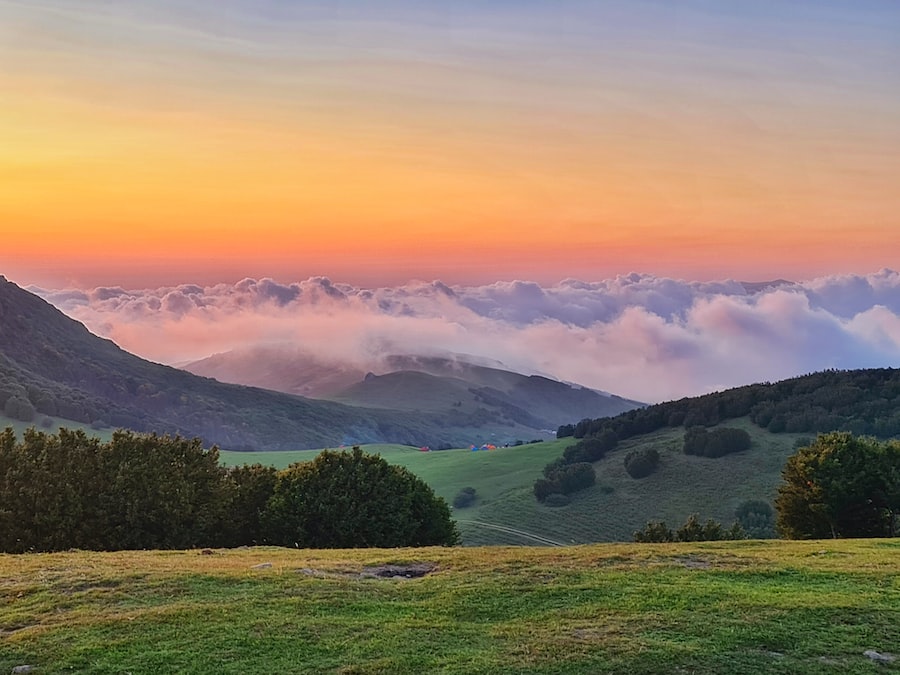
While Banff National Park is known for its iconic attractions, there are also plenty of hidden gems waiting to be discovered. These lesser-known attractions and activities offer a chance to explore the park away from the crowds and experience its natural beauty in a more intimate way.
One hidden gem in Banff National Park is the Ink Pots. Located in Johnston Canyon, the Ink Pots are a series of vibrant blue-green pools fed by cold mineral springs. The hike to the Ink Pots is less crowded than other popular trails in the park, offering a peaceful and serene experience.
Another hidden gem is the Rockbound Lake trail. This moderate hike takes you through a beautiful forest before opening up to stunning views of Rockbound Lake and surrounding peaks. The trail is less crowded than some of the more popular hikes in the area, making it a great choice for those seeking solitude.
For a unique experience, consider visiting the Cave and Basin National Historic Site. This site is where Banff National Park was born, as it was here that hot springs were discovered in 1883, leading to the establishment of the park. Visitors can explore the historic bathhouse, learn about the park’s history, and even take a dip in the hot springs.
To discover hidden gems in Banff National Park, it’s important to do some research and be willing to venture off the beaten path. Talk to locals or park rangers for recommendations, or consult guidebooks and online resources for lesser-known attractions. Exploring these hidden gems will not only allow you to escape the crowds but also provide a deeper appreciation for the park’s natural beauty.
Food and Drink in Banff: Local Cuisine and Best Restaurants
Banff National Park is not only a feast for the eyes but also a culinary delight. The park and its surrounding areas offer a wide range of dining options, from casual cafes to fine dining establishments. Visitors can indulge in local cuisine, international flavors, and everything in between.
When it comes to local food and drink specialties, Banff has plenty to offer. Alberta beef is renowned for its quality and flavor, and many restaurants in the area serve up delicious steaks and burgers. For a taste of the wild, try bison or elk, which are often featured on menus in Banff.
Poutine is a Canadian classic that can be found in many restaurants in Banff. This dish consists of French fries topped with cheese curds and smothered in gravy, creating a rich and satisfying comfort food. It’s the perfect dish to warm you up after a day of outdoor adventure.
For those with a sweet tooth, be sure to try some Canadian maple syrup. This sweet treat is made from the sap of maple trees and is a staple in Canadian cuisine. Drizzle it over pancakes or waffles for a delicious breakfast or enjoy it as a topping for ice cream or yogurt.
When it comes to dining out in Banff, there are several restaurants that stand out for their exceptional cuisine and ambiance. The Bison Restaurant & Terrace offers a farm-to-table dining experience, with a focus on locally sourced ingredients and sustainable practices. The Grizzly House is a Banff institution, known for its fondue and exotic meats such as rattlesnake and alligator.
For those looking for something more casual, there are plenty of cafes and pubs in Banff where you can grab a quick bite or enjoy a pint of local craft beer. The Wild Flour Bakery is a popular spot for breakfast or lunch, offering freshly baked goods and sandwiches made with organic ingredients. The Banff Ave Brewing Co. is a great place to relax and sample a variety of locally brewed beers.
When dining in Banff, it’s important to be aware that the park is a popular tourist destination, especially during peak season. It’s a good idea to make reservations in advance, especially for dinner at popular restaurants. Be sure to check the restaurant’s website or call ahead for any COVID-19 related restrictions or guidelines.
Banff in All Seasons: Planning Your Visit for Year-Round Adventure
Banff National Park is a destination that can be enjoyed year-round, with each season offering its own unique beauty and activities. Whether you’re visiting in the summer, fall, winter, or spring, there is always something to see and do in Banff.
Summer is the most popular time to visit Banff National Park, as the weather is warm and the days are long. This is the perfect time for hiking, camping, and exploring the park’s many attractions. The lakes and rivers are also ideal for boating, fishing, and swimming.
Fall in Banff brings stunning displays of autumn colors as the leaves change from green to vibrant shades of red, orange, and gold. This is a great time for hiking and wildlife watching, as animals prepare for the winter months. The cooler temperatures also make it a pleasant time for outdoor activities.
Winter in Banff is a magical time, with snow-covered landscapes and opportunities for winter sports. The park offers world-class skiing and snowboarding at resorts such as Sunshine Village and Lake Louise Ski Resort.
Check out this related article on “The Power of Hydration for Aging Bodies” from Travelogs.org. It explores the importance of staying hydrated as we age and the benefits it can have on our overall health and well-being. From improving cognitive function to supporting joint health, hydration plays a crucial role in maintaining a healthy lifestyle. Discover practical tips and strategies to ensure you’re getting enough fluids throughout the day. Read more
